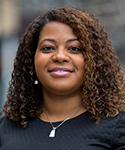March 22, 2022
Suggestions for congregations entering the next phase of COVID-19

Recognizing the harms done by the last two years, a psychologist who specializes in the intersection of faith and mental health offers some practices to help churches reconnect as communities.
As we enter our third year of the pandemic, COVID-19 may finally be receding. We are seeing a relaxation of mask and distancing mandates nationwide. Many are envisioning a “return to normal,” but I have to question that phraseology.
If “normal” means how things were before COVID (the new B.C.), is that even possible? And if it’s possible, is it what we want? I think not. We are probably better off envisioning a “new normal,” but that’s not an easier task.
By now, most houses of worship that had ceased in-person gathering have resumed in some form. We are living a hybrid lifestyle, with some meetings now in person, some online and many in both modalities — not so normal at all.
Questions abound for decision makers. Do we mandate masks? Do our denominational guidelines match the ethos of this particular congregation? Am I making a political statement with my choices? Who am I? Who are we? What are we doing here?
Congregational leaders have always worked hard, and they’ve worked overtime for the past two years trying to retain, reclaim and re-imagine Christian community. Attending to these tasks calls us to reckon with the long-standing polarity in our country, thrown into even sharper relief by the sociopolitical and economic turmoil that have exploded since March 2020.
What does Christian community look like in a polarized America, when we are still reeling from the collective trauma of a pandemic, nursing the wounds of an unresolved racial reckoning and bearing witness to threats of yet another world conflict? What does it mean to be the hands and feet of God when it’s sometimes hard to even see God?
Some of our theological leanings might warn against our posing questions to God, but I’ll admit I’ve got some big ones. The clergy I’ve spoken with have them, too. We’ve all got them. And there’s no guarantee the answers will come at all, or anytime soon. When we don’t know very much, I hope we can rest on what we believe about who God is and how God calls us to act.
There is no list of right answers; what matters most in this moment is that we make an intentional decision to lean heavily on the being. Ultimately, Christian community is about people being with other people, working to figure out this messy life.
Many of us are familiar with a poem written on a wall in Cologne, Germany, during the Holocaust and the hymn that was later adapted from it:
I believe in the sun
even when it isn’t shining.
I believe in love
even when feeling it not.
I believe in God
even when God is silent.
I believe in the silence.
What does it mean to believe in God when God is silent? How can we, as communities of faith, believe in the silence itself?
First, we can seek to be a repository for questions rather than a dispenser of answers. Much of our religious tradition invites us to be the final authority on life and on righteousness. We act as a conduit for God and tell people what to do and how to do it. But in an era of “alternative facts,” dog whistling and cancel culture, answers are sometimes wrong. At other times, they are only part of the story.
What would it mean if our communities built new iterations of ourselves on struggling with the big questions together while trusting God to meet us in the process? Imagine the gift it would be for leaders and parishioners alike to acknowledge that we don’t know but are in it together. Jesus was not afraid of questions, and we don’t have to be.
Along with making a commitment to big and messy questions, we can acknowledge that the past two years have cost us in all the ways that count. We’re coming up for air, and we’re getting back to the things we love, but we all bear the bruises of this journey.
As we return to in-person community, we must acknowledge that many of us are fundamentally different people than we were in March 2020. While some of us have an internal resilience that has allowed us to make positive changes and even thrive in this time, others in our community have suffered greatly and are continuing to set survival as the goal. That reality is with us whenever we gather.
However, post-traumatic growth, a theory developed by psychologists Richard Tedeschi and Lawrence Calhoun, conceives that after struggle, we have the capacity to be better and wiser, more spiritually engaged and more emotionally attuned. This notion is offering statistical evidence of a spiritual promise from the prophet Isaiah: beauty for ashes.
We don’t have to rush there. We still sit with people in their pain, for that too is incredibly holy work. But the gift here is to let the hope coexist with the pain, so that even as we mourn, we hold the truth that God can bring peace and joy to our hearts again.
Asking the big questions, mourning and making space for beauty are the practices that allow us to re-create and realign with who we are and whom God is calling us to be. The opportunity of this challenging season in all our lives has been the chance to identify what’s important and what we can leave behind.
Although God doesn’t change, we do and we have. We must change to make our communities places where all of us can thrive. God is always ready to show us a new way, but we must be ready to see it.



Share